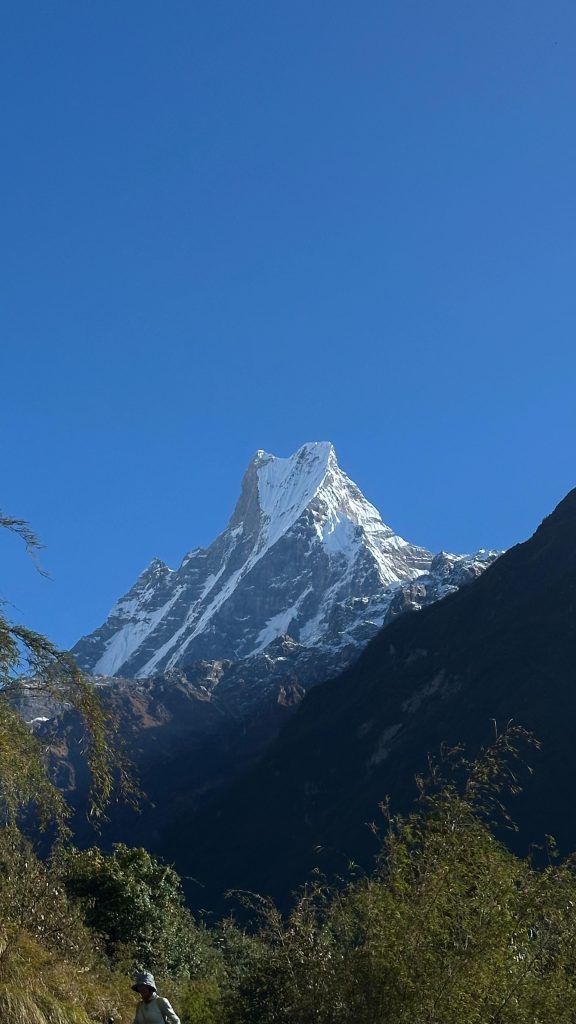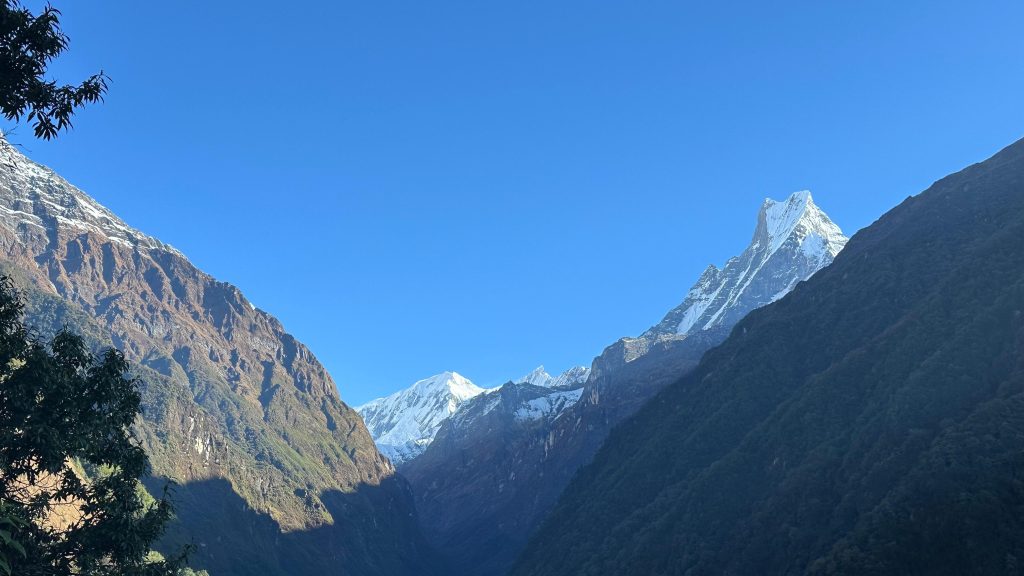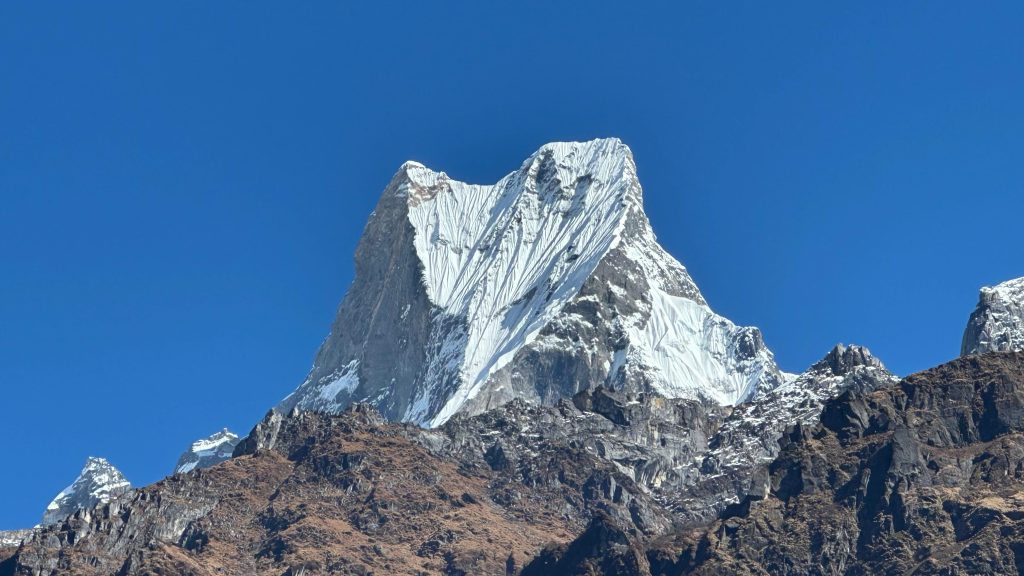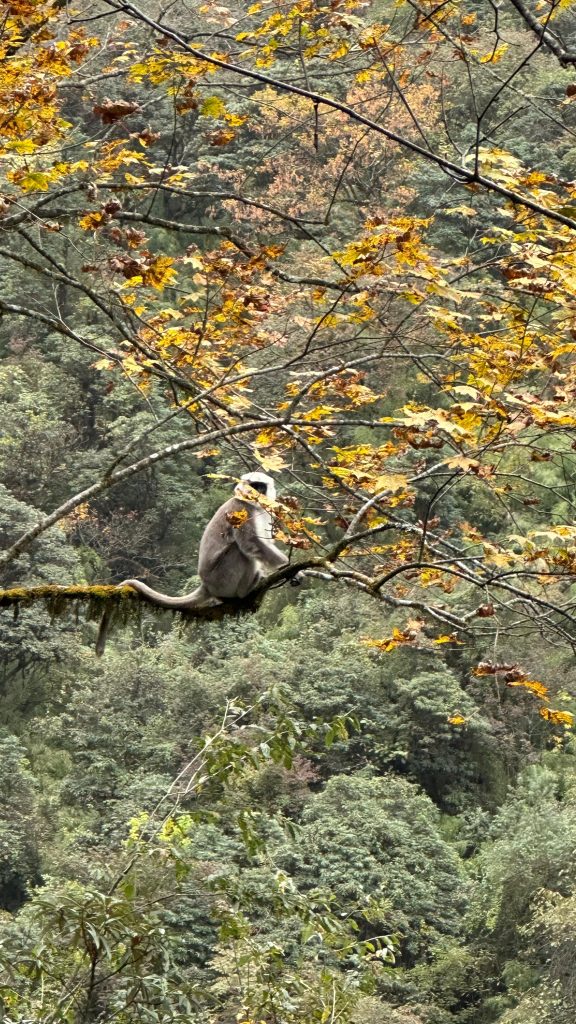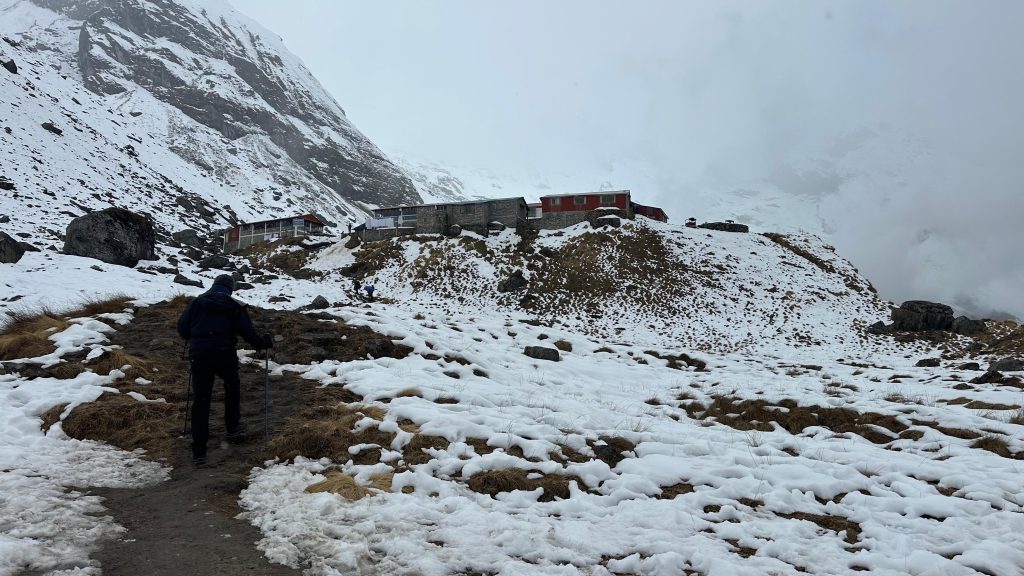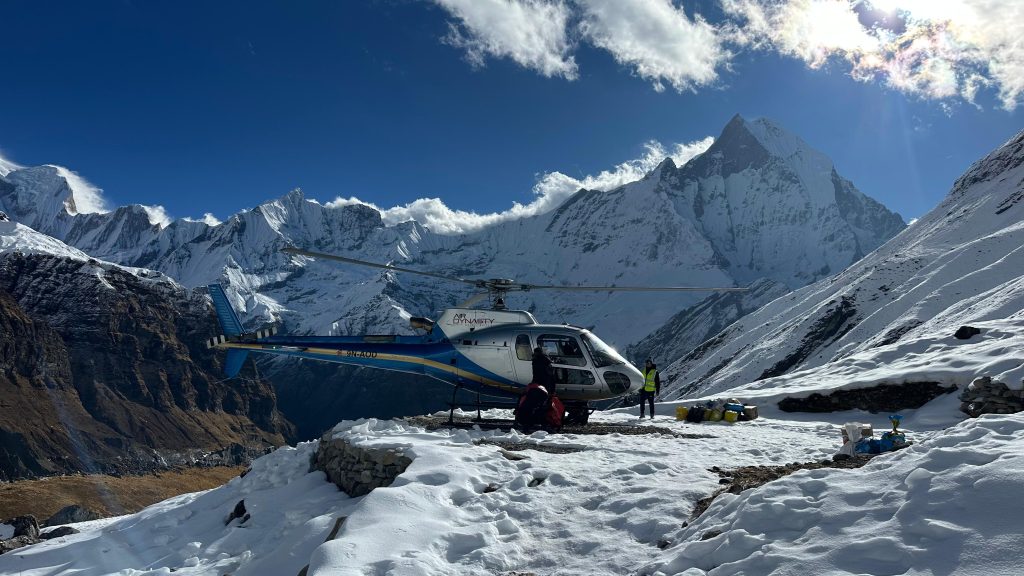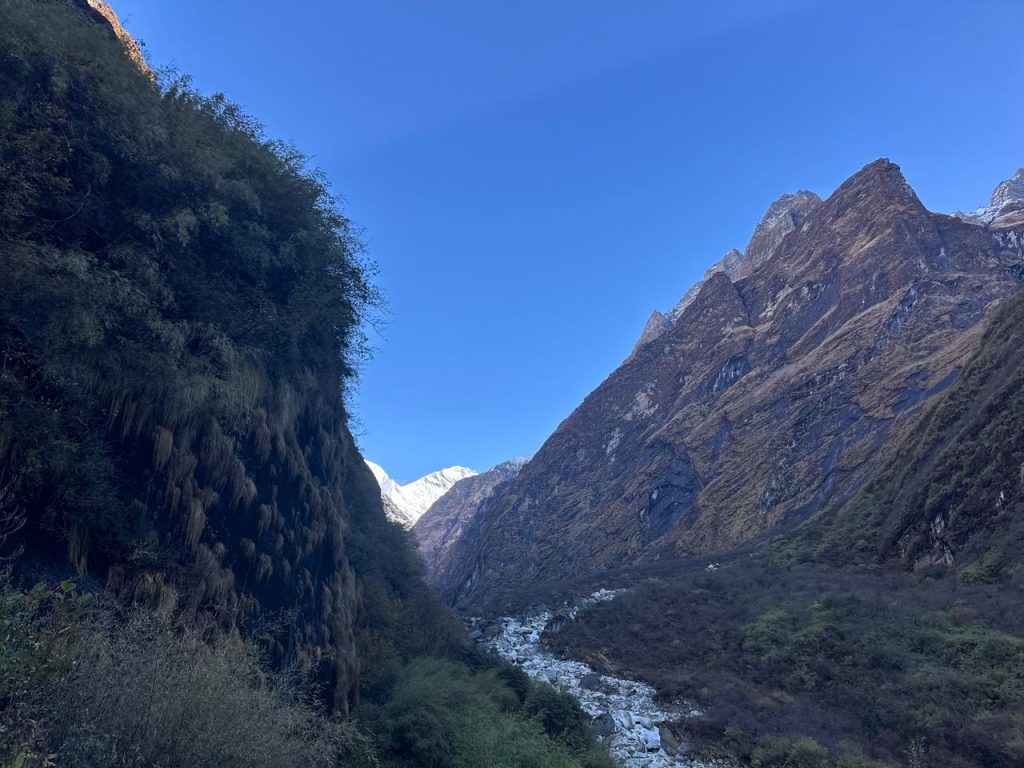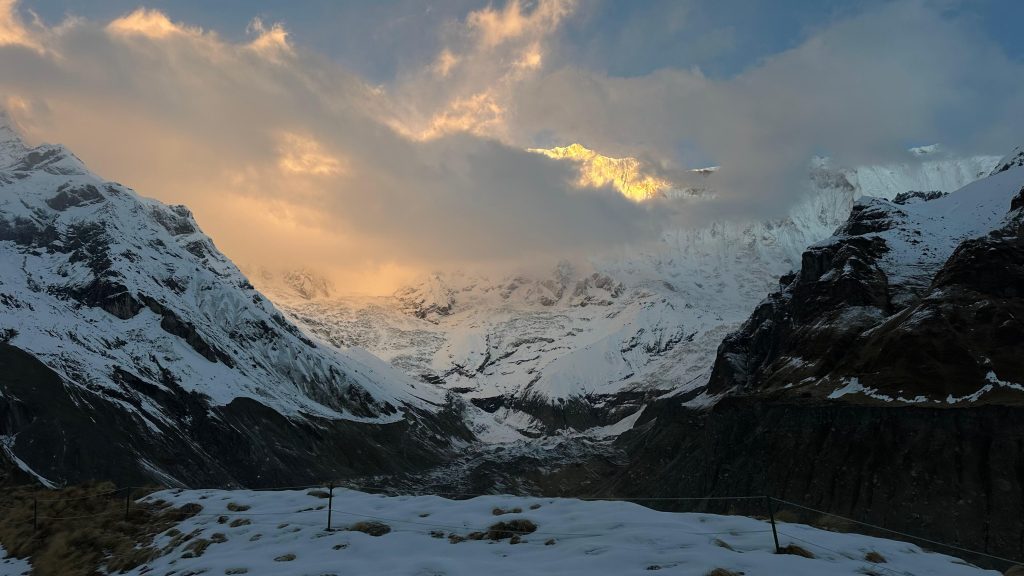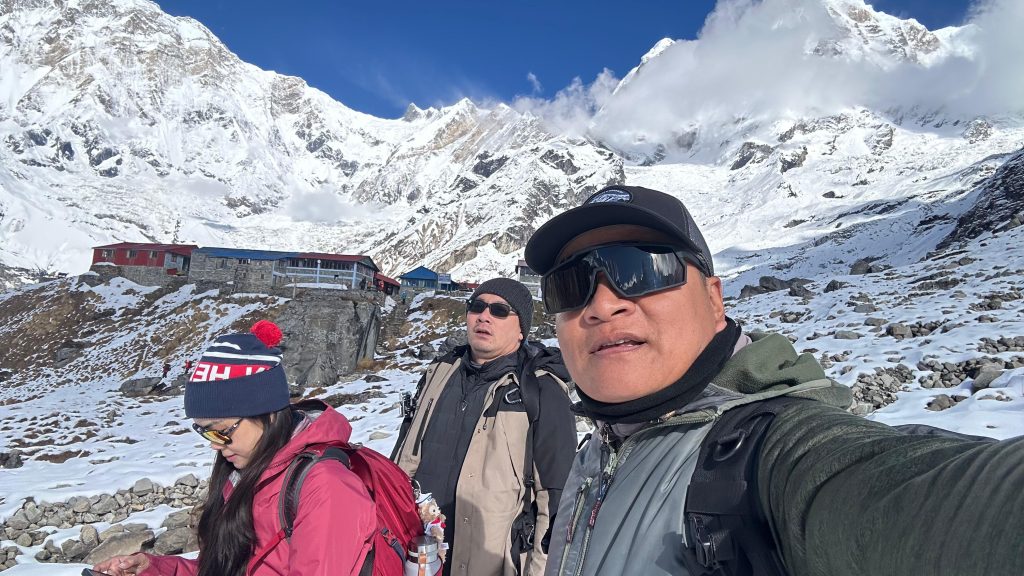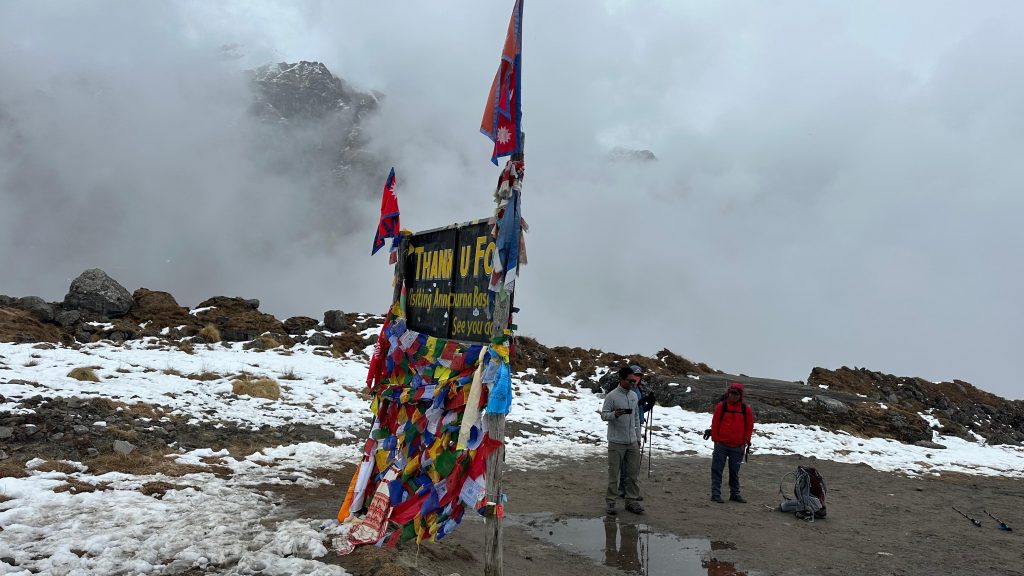Trip Info
-
Flights, Private vehicle
-
2 to 12 people
-
5,000m (Makalu Base Camp)
-
Hotels in Kathmandu, Camping/Tea-houses during the trek
-
Moderate to Challenging
-
Kathmandu (1,300m)
-
Kathmandu (1,300m)
-
Spring (March-May), Autumn (September-November)
-
Experienced Trek Leader
-
Guided Trekking Adventure
-
English (Other languages on request)
-
Full board during the trek, breakfast in Kathmandu
-
Makalu Barun National Park Permit, TIMS
Overview
Makalu Base Camp perched in a remote region of Nepal houses the world’s fifth highest mountain peak. Makalu is an unrivelled dream destination seeking and waiting for nature lovers and adventurers to be amazed with its rustic natural beauty to make an enthralling experience on each day of the camping trek. Makalu Base Camp culminates at the base of the Mt Makalu and is encircled by the lush Makalu Barun National Park blooming with 3000 species of flowering plants and sanctuary for 440 bird, and 75 mammal species.
This incredible trek includes the awesome experience of crossing the Shipton La pass following in the footsteps of the legendary mountaineers and explorers who convinced the humanity to believe in the human capabilities of doing unbelievable adventure activity, as well as taking the memorable signature pose at the foothills of Mt. Makalu.
Apart from immersion in rich bio-diversity and dramatic beauty which the Makalu Barun Conservation area harbors, the incredible Makalu Base Camp trek stuns with the breathtaking glimpses of the world highest peaks along the insight into adorned culture and religion of the inhabitants Sherpa and Rai community along with the camping or tea-house experience.
The trek starts with a steep descent trail passing through dense forest enjoying the lush beauty of the forest and playing hide and seek with the sunrays inside the jungle.
[This is true: but describes just the first day. What about the other days which do not involve much jungle? The description feels incomplete and a bit “waffly” – could do with refinement.]
Trip Highlights
- Cross the legendary Shipton La pass, following in the footsteps of iconic explorers.
- Witness breathtaking views of Mt. Makalu and other world-class peaks.
- Explore the rich bio-diversity of Makalu Barun National Park with 3,000 plant species and diverse wildlife.
- Experience the unique culture of the Sherpa and Rai communities.
- Enjoy a mix of camping and tea-house stays in remote, stunning landscapes.
Itinerary
Langtang Ri Trekking & Expedition representative will greet you in an airport & transfer you to your Hotel, after refreshment you will be picked from hotel lobby to office where you will be formally introduced to your Guide and the activities to be enjoyed over the next few days. We will also ask for your passport photographs and any other details required for your trek permits, at this stage.
Includes/Excludes
Cost Includes
- Airport Pick up & Drop Transportation by private vehicle
- Twin / double sharing accommodation at Kathmandu in 2 to 3 star hotels with breakfast
- Sightseeing in Kathmandu Escorted with English Speaking Guide, Entrance fee & Private transportation
- Kathmandu Tumlingtar Kathmandu flight fare for guide & members
- Cargo
- Accommodation in tent during trek
- Meals (Breakfast,lunch, dinner) in trekking
- Boiled drinking water, Tea, coffee
- Seasonal sleeping bag
- Trekking map for group
- Makalu National park fee
- Tims
- All necessary paper work & Permits
- A First Aid and Eco trained & Government license holder English Speaking guide
- Experiance cook, Kitchen crews, sherpa and required porter while on trek
- Accommodation, meals, salary, equipment & Insurance of Langtang Ri trekking staffs
- Tent, mattress, sleeping bag, cooking utensils and other camping materials
- Travel & Rescue arrangement
- All government taxes
- First Aids Kits
- Farewell dinner
Cost Excludes
- International Airfare
- Nepal Visa fee (US$ 40 per person for 30 days)
- Excess baggage charges
- Lunch/Dinner in Kathmandu
- Medical evacuation in case of emergency
- Personal gears & clothing (available on hire)
- Client's insurance, Items of personal nature i.e. Soft/hard drinks, Tips etc
- Expenses incurred due to mishaps, landslide, strikes, political unrest etc. In such case extra will be charged as per actual
- Anything not specified in the Cost Include section
Equipment Checklist
Preparing for the Makalu Base Camp Trek requires careful planning and the right gear to ensure a safe and enjoyable experience. Here’s a comprehensive equipment checklist to help you pack efficiently:
Clothing
- Base Layers
- Moisture-wicking underwear
- Thermal base layer tops and bottoms (merino wool or synthetic)
- Mid Layers
- Insulating fleece jacket or pullover
- Lightweight down jacket or synthetic puffy jacket
- Outer Layers
- Waterproof and windproof jacket (Gore-Tex or similar)
- Waterproof pants
- Hiking pants and shorts
- Headwear
- Warm hat or beanie
- Sun hat or cap
- Balaclava or face mask (for high altitudes)
- Gloves and Mittens
- Lightweight gloves
- Insulated gloves or mittens (waterproof)
- Footwear
- Trekking boots (waterproof and broken-in)
- Lightweight camp shoes or sandals
- Gaiters (for muddy or snowy conditions)
- Hiking socks (multiple pairs, including warm liners)
Equipment
- Backpack
- Daypack (20-30 liters) for daily trekking
- Larger trekking backpack (50-70 liters) for carrying personal gear and sleeping bag
- Sleeping Gear
- Sleeping bag (3-season or suitable for temperatures down to -10°C / 14°F)
- Sleeping bag liner (for extra warmth)
- Sleeping pad (insulated and compact)
- Trekking Poles
- Adjustable trekking poles with rubber tips (optional but helpful)
- Water and Hydration
- Water bottles (2-3 liters capacity)
- Hydration system or water bladder (optional)
- Water purification tablets or filter (for emergencies)
- Headlamp and Batteries
- Headlamp with extra batteries
- Sunglasses and Sun Protection
- UV-protective sunglasses
- Sunscreen (SPF 30 or higher)
- Lip balm with SPF
- First Aid Kit
- Personal medications (including altitude sickness tablets)
- Bandages, antiseptic wipes, and blister treatment
- Pain relievers and other essential medicines
Additional Gear
- Personal Documents
- Passport and copies
- Trekking permits (Makalu Barun National Park Permit, TIMS Card)
- Travel insurance documents
- Navigation Tools
- Map of the Makalu region
- GPS device or smartphone with offline maps
- Camera and Electronics
- Camera with spare batteries and memory cards
- Phone and power bank
- Adapters and chargers (Nepal uses Type C, D, and M plugs)
- Toiletries
- Biodegradable soap
- Toothbrush and toothpaste
- Toilet paper and trowel (for use in remote areas)
- Snacks
- High-energy snacks (nuts, dried fruit, energy bars)
- Emergency Items
- Multi-tool or Swiss Army knife
- Small sewing kit
- Personal identification and emergency contact information
Symptoms of Cold and How to Manage
- Chilblains (Pernio)
- Symptoms: Red, itchy, or swollen skin, particularly on fingers, toes, ears, or nose.
- Management: Warm affected areas slowly; avoid direct heat. Keep feet dry and warm, and wear insulated gloves.
- Frostbite
- Symptoms: Numbness, white or grayish skin, hard or waxy texture on extremities.
- Management: Warm the affected areas gradually with body heat. Avoid rubbing or massaging the frostbitten area. Seek medical attention immediately if severe.
- Hypothermia
- Symptoms: Shivering, confusion, slurred speech, drowsiness, and loss of coordination.
- Management: Move to a warmer environment, remove wet clothing, and warm the body gradually using blankets or warm fluids. Seek medical help immediately.
- Cold-Related Injuries
- Symptoms: Pain, numbness, or tingling in extremities.
- Management: Ensure proper insulation and keep extremities dry. Use hand warmers and heated packs if necessary. Avoid prolonged cold exposure.
Environmental and Cultural Responsibility
- Leave No Trace: Trekkers should follow Leave No Trace principles to minimize environmental impact, carrying out all waste and using eco-friendly products.
- Respecting Local Culture: The Makalu region is home to Sherpa and Rai communities with unique traditions. Respect these by dressing modestly, asking permission before taking photographs, and not disturbing religious sites.
- Supporting Local Communities: Hiring local guides, porters, and purchasing goods from local vendors supports the local economy, especially in remote areas with limited economic opportunities.
This equipment checklist, along with cold-related safety tips, will ensure you are well-prepared for the Makalu Base Camp Trek, allowing you to focus on enjoying the remote wilderness and cultural richness of the region.
MAP

Essential information
The Makalu Base Camp Trek is a hidden gem among Nepal’s trekking routes, taking adventurers through some of the most remote and pristine regions of the Himalayas. It offers breathtaking views of Mount Makalu, the fifth-highest mountain in the world, and a challenging yet rewarding trekking experience. Below, you’ll find a detailed guide covering all essential information to help you prepare for this extraordinary journey.
General Information
Region:
The Makalu Base Camp Trek is located in the eastern part of Nepal, within the Makalu Barun National Park. This region is known for its stunning biodiversity, majestic mountain views, and remote wilderness. The trek takes you through lush forests, alpine meadows, and quaint mountain villages.
Duration:
The trek spans 20 days, including travel days and time for acclimatization. The journey involves trekking through diverse landscapes to reach the base camp of Mount Makalu and return to the starting point.
Maximum Elevation:
The highest point of the trek is Makalu Base Camp, situated at 5,100 meters (16,732 feet). While the elevation is high, proper acclimatization and preparation can make this trek accessible to determined trekkers.
Difficulty:
The Makalu Base Camp Trek is considered challenging. Trekkers should be prepared for steep ascents, long days of hiking, and remote terrain. High levels of fitness and prior trekking experience at altitude are recommended.
Best Time to Trek:
The best times to undertake the Makalu Base Camp Trek are during the pre-monsoon season (March to May) and post-monsoon season (September to November). These periods offer the best weather conditions and the clearest views of the mountains. Winter (December to February) can be extremely cold, and the monsoon season (June to August) brings heavy rains and trail hazards.
Permits and Regulations
Permits Required:
To trek to Makalu Base Camp, you will need the following permits:
- Makalu Barun National Park Entry Permit: Required to enter the national park and costs NPR 3,000 (approximately USD 25) for foreign nationals.
- TIMS (Trekkers’ Information Management System) Card: Costs NPR 2,000 (approximately USD 15) per person and is necessary for safety monitoring.
Permits can be obtained in Kathmandu before starting the trek. It is important to carry these permits, as they may be checked by authorities along the route.
Accommodations and Meals
Accommodation:
During the Makalu Base Camp Trek, accommodations are mainly in teahouses and lodges.
- Teahouses/Lodges: At lower altitudes, teahouses offer private rooms with basic amenities. Higher up, the accommodations become simpler, with shared facilities and limited comforts.
- Camping: Camping is not typically required, but some groups may opt for it in more remote areas. Trekking with a support team is necessary for a full camping experience.
Meals:
The meals available during the trek are simple yet nutritious, designed to meet the energy needs of trekkers.
- Breakfast: Options like porridge, eggs, toast, and tea are common.
- Lunch: Expect meals such as dal bhat (lentils with rice), noodles, and soups.
- Dinner: Dinners often consist of dal bhat, pasta, momos, or other local dishes. Food options may become limited at higher altitudes.
Health and Fitness
Fitness Level:
The Makalu Base Camp Trek requires a high level of physical fitness. Trekkers should be prepared for long days of hiking, often at high altitudes. Previous trekking experience is highly recommended, especially in high-altitude environments.
Acclimatization:
Acclimatization is essential due to the trek’s high elevations. The trek includes planned acclimatization days to help prevent altitude sickness. Symptoms such as headaches, nausea, and fatigue should be taken seriously, and descending may be necessary if they worsen.
First Aid:
A personal first-aid kit should include altitude sickness medication (Diamox or acetazolamide), pain relievers, stomach medications, bandages, and antiseptics.
Vaccinations:
Check with your healthcare provider for recommended vaccinations before traveling to Nepal. Typical vaccines include hepatitis A, hepatitis B, typhoid, and tetanus. Carry altitude sickness medication for safety.
Insurance:
Comprehensive travel insurance is crucial for this trek, covering high-altitude trekking, medical evacuation, and helicopter rescue. This is particularly important in case of severe altitude sickness or injury in the remote regions of the trek.
Environmental and Cultural Responsibility
Leave No Trace:
Follow Leave No Trace principles, ensuring you do not disturb the natural environment. Pack out all waste and avoid damaging the delicate ecosystems of the national park.
Respecting Local Culture:
The region is home to the Rai and Sherpa communities, who follow Tibetan Buddhism. Show respect for local customs, dress modestly, and seek permission before photographing people or religious sites.
Supporting Local Communities:
Hiring local guides and porters, staying in locally run teahouses, and purchasing goods from local vendors helps support the region’s economy and encourages sustainable tourism.
Transportation
Flights:
The trek typically begins with a flight from Kathmandu to Tumlingtar, followed by a drive to the starting point of the trek at Chichila or Num.
Ground Transportation:
Private vehicles are used for transportation within Kathmandu and to/from Tumlingtar. Be prepared for potential delays due to weather or road conditions.
Guiding and Support
Guides and Porters:
Hiring a licensed guide is recommended for this trek, as they provide essential support, knowledge of the region, and ensure your safety. Porters are available to carry your main luggage, allowing you to focus on enjoying the trek.
Guiding Method:
The trek is usually fully guided, with professional guides handling logistics, accommodations, and permits.
Group Size:
Group sizes vary from 2 to 12 people. Smaller groups offer a more personalized experience, while larger groups may share costs.
Communication and Connectivity
Connectivity:
Mobile connectivity is available in some parts of the trek, but it may be limited or unavailable in remote areas. Some teahouses offer Wi-Fi for a fee, but it is not always reliable.
Privacy Policy
Data Collection:
We collect necessary personal information, such as passport details and emergency contacts, for booking purposes and ensuring your safety during the trek.
Data Usage:
Your information is used solely for organizing the trek and obtaining required permits. It is not shared with third parties except for these purposes.
Confidentiality:
All personal data is securely stored and accessed only by authorized personnel involved in managing your trek.
Consent:
By booking this trek, you agree to the collection and use of your data as outlined in our privacy policy.
FAQs
- How fit do I need to be for the Makalu Base Camp Trek?
A high level of fitness is required, with the ability to hike for several hours at high altitudes. - What kind of food is available during the trek?
Meals include local staples such as dal bhat, noodles, and soups. Food quality may vary, especially at higher altitudes. - What if I experience altitude sickness?
Guides are trained to handle altitude sickness and may recommend descending if symptoms persist. - Can I use a mobile phone during the trek?
Mobile connectivity is available in some areas but may be limited. Satellite phones are available in case of emergencies. - What is the cancellation policy?
Cancellation policies vary by operator, so it is advisable to check the terms when booking.
This guide ensures that you have all the information necessary to plan your Makalu Base Camp Trek, offering a complete preparation for this adventurous and memorable journey.































